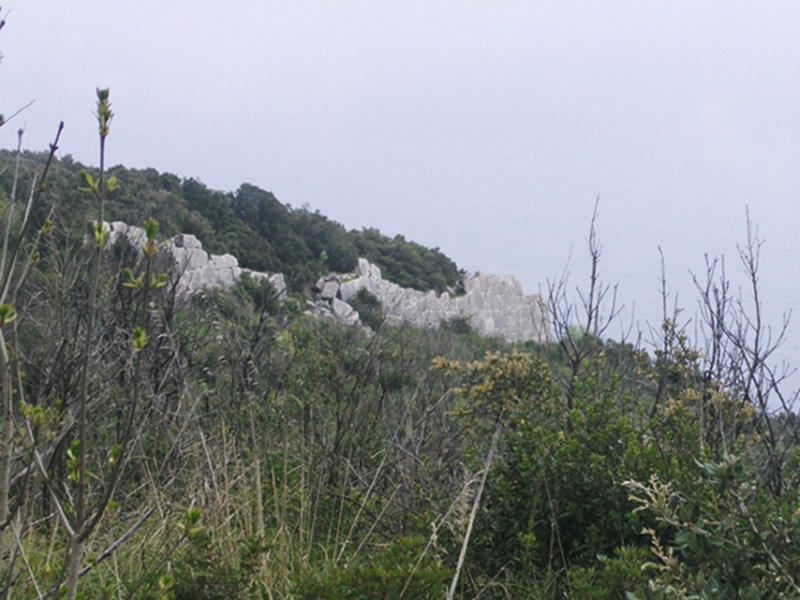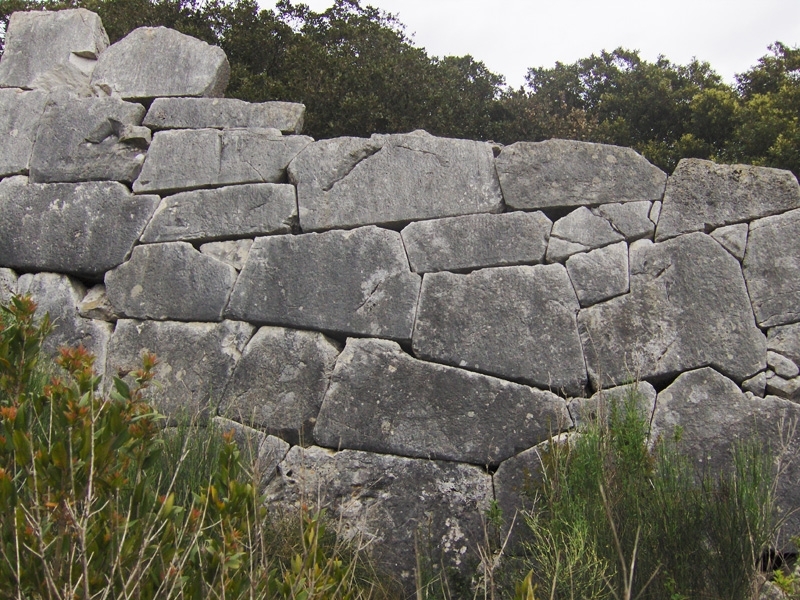The Acropolis
A shrine or a military work?
The walls of Circeo’s Acropolis were built in local limestone during the Roman Mid-Republic (3rd-2nd century b.C.). The enclosed area - around two hectares along the mountain edge - was roughly square; the walls were built in straight stretches, whose length depended on the shape of the ground.
Today, their height is not uniform; on the north-western side there is the the highest preserved portion (6 metres). There, as in the other sections where walls are still quite high, it can be easily observed how walls are thicker at the base and get thinner toward the top, by about 10 cm per each vertical metre.
The walls were built on living rock, shaped as a block to lay the first row of stones on it. Two different techniques were used for the two faces of the walls: polygonal masonry (type 3) for the exterior, using large, well-cut and polished blocks, with anathyrosis at intervals; small-to-medium size stones, used as they came from the quarry, for the interior.
Where the walls were thicker than the space between the external and the internal block, especially at the base, the empty space was filled with rubble, although the blocks themselves were usually thick enough.

Acropolis
(photo by Archivio Parco Nazionale del Circeo)

Acropolis
(photo by Archivio Parco Nazionale del Circeo)